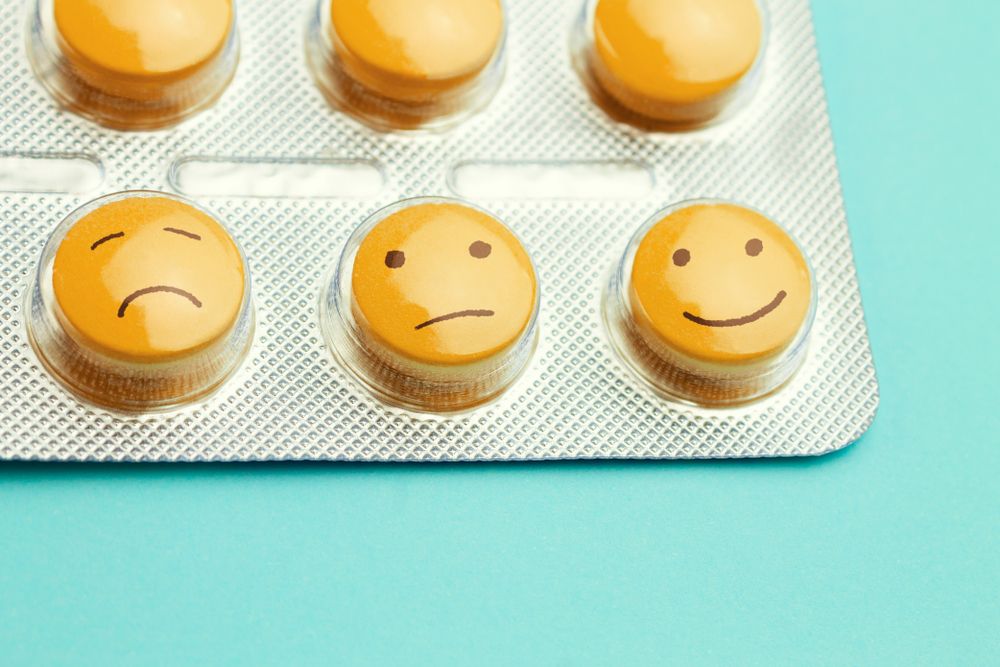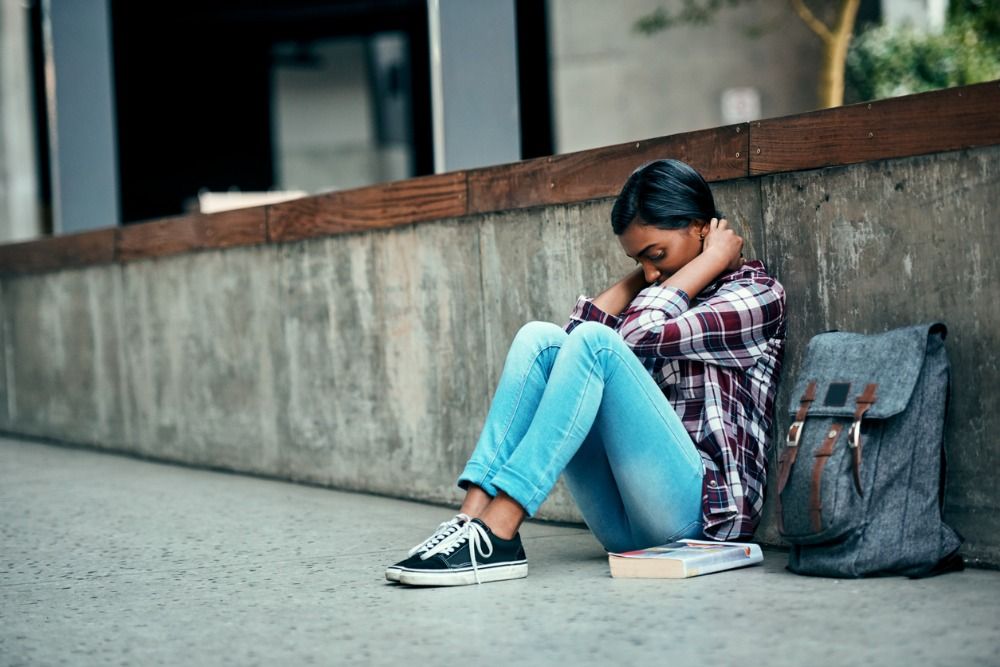Mental health describes the state of a person’s thoughts, feelings, and actions being in harmony. (Learn More) If this is disrupted, for reasons of genetics, environment, substance use, or other factors, the person is often driven to compulsively harmful behavior. (Learn More)
There are many kinds of mental illnesses, but some of the most common ones are anxiety disorders and clinical depression. (Learn More) There are also many treatment options for mental illnesses. The most recommended course of action often includes a combination of medication, therapy, and social support.
Modern innovations like telepsychiatry make it possible to get some of these services online. (Learn More)
What Is Mental Health?
Medical News Today defines mental health as the collective well-being of our intellectual, behavioral, and emotional selves. If the way we think, the way we feel, and the way we behave are in alignment — conducive to our productivity and happiness, and helping us to be better members of our communities and environments — then this is peak mental health.
Mental health is a very broad term, covering almost every aspect of our physical health, our daily life, and our professional and personal lives. It deals almost directly with a person’s ability to enjoy life, even in the face of hardship and stress, according to the World Health Organization. Mental health is an expression of behavioral, emotional, and social normality and maturity.
By some definitions, it is also an absence of a disorder that threatens to unbalance that status; by others, it is much more than that.
Overall, the concept of mental health refers to a person’s ability and likelihood of integrating their personal mental makeup with the world around them, finding a working and healthy balance of work, love, and recreation.
Mental Health & Illness
The American Psychiatric Association goes into more detail, explaining that illnesses of mental health are conditions that induce changes in how a person feels, thinks, or acts — or some combination of all three. The negative changes cause distress and problems in how a person functions individually, as a member of their society, and/or as a member of their family.
Mental illness comes in many forms, and as such, it is incredibly common. In any year, almost 20 percent of adults in America experience some form of a mental health problem, reports the National Alliance on Mental Illness. Additionally, the National Institute of Mental Health found that 4.1 percent of U.S. adults have a serious mental illness (which may require hospitalization and long-term treatment), and 8.5 percent of adults have a psychological dependence on drugs and alcohol, which is usually a compulsion brought about by a mental health issue.


The good news is that mental health illnesses are treatable. People who get seen quickly and adhere to their treatment programs continue to function properly in their daily lives, for many years to come. They can still attend school and go to work, they can look after their children and be good members of their communities, and they can learn how to cope with stress and adversity that might threaten their psychological well-being.
It is hard to overstate the importance of mental health. Having good mental health is the basis for how we, as human beings, think, feel, communicate, learn, interact with one another, and initiate and experience personal growth. It is equally as important as regular exercise and a good diet.
Without taking care of our mental health, our relationships suffer, our personal self-esteem suffers, and we would not be able to contribute to our society or make a positive change in the world around us.
Myths & Misunderstandings
Unfortunately, there still exists much stigma and misunderstanding about mental health problems, based largely on myths and outdated science. For example, some people believe these myths:
- Mental illness is the result of a personal weakness or even the choice of the person to act in a certain way.
- People who have mental illnesses are naturally violent or irrational.
- There are no effective treatments for mental health problems.
- Mental health is not that important.
None of these could be further from the truth, but misinformation and sensationalism about the worst cases of mental problems have cast a shadow over the realities that tens of millions of people have to live with every day.
For example, Psychology Today clarifies the point that “mental illness is not a failure,” and is instead a “serious, life-threatening illness” caused by changes in brain chemistry. In many cases, these changes are due to genetics and environmental factors, and they are far beyond the person’s own control.
Similarly, while there are certain mental health conditions that can compel a person to act in violent or unpredictable ways, the actual relationship between violence and a mental health illness is much more nuanced. Harvard Medical School writes that “most individuals with psychiatric disorders are not violent,” and that research has not shown that there is a direct connection between mental illness and violent crime.
However, a subset of people who have significant mental health problems do commit assaults and act in ways that are dangerous to themselves and the people around them. This leads to the belief that a mental health disorder causes violence.
Who Gets Mentally Ill?
As a result of all these stigmas and misconceptions, many people who have mental illnesses are ashamed to talk about their need for help. Some people resort to unhealthy methods of coping with their problems, such as substance abuse. But there is no reason to be ashamed of mental illness.
A mental health problem is a medical condition, no different from issues like diabetes or heart disease. People do not ask to develop depression or anxiety disorders, and they legitimately want to get better. Furthermore, treatment advancements mean that with the right combination of medication, therapy, and social support (even from the privacy and comfort of their own homes), they can.
Another false belief about mental illness is that only certain people get it. Again, however, this is completely false.
Mental health problems can develop in people of any race, gender, socioeconomic demographic, religious belief (or lack thereof), sexual orientation, or any other expression of cultural identity. Most mental illnesses tend to begin by the age of 24, but the changes in brain chemistry that precipitate the development of a problem can occur at any age, from the very young to the very old.
Anxiety Disorders
Anxiety disorders rank as the most common manifestation of mental illness. People with anxiety disorders have an extreme fear or anxiety, which is usually connected with particular objects or situations.


One of the biggest characteristics of an anxiety disorder is that the patient will go to severely disruptive lengths to avoid exposure to whatever causes their anxiety. They might miss work, damage their relationships, or otherwise negatively affect their own life, if it means they can put a buffer between them and the source of their anxiety.
Panic disorder is one form of anxiety disorder, where a patient experiences a rapid terror or a sense of imminent disaster that is so debilitating, it paralyzes them. What characterizes panic disorder, writes Psych Central, is that the sensation of fear is uncontrollable, unexpected, and irrational. It can be over in one minute, or it can last for 10 minutes.
People are struck with an unshakable dread that something bad is going to happen and that they are in mortal danger, even if there is no such threat. In order for such an incident to be a legitimate panic attack, the actual panic must be inconsistent with the situation.
During a panic attack, people will experience the following:
- Dizziness
- Nausea and vomiting
- Breathing difficulties
- Sweating
- Rapid heartbeat
Panic disorder can be so strong that people will often go out of their way to avoid exposing themselves to the source of their anxiety. Many people who have panic attacks will not even leave their homes, for example, out of the sheer fear of what they will have to go through if they see their panic trigger. According to the National Institute of Mental Health, about a third of people who have panic disorder don’t leave their house.
Panic disorder is very common. Around 6 million people experience an incident of a panic attack every year, says the Anxiety and Depression Association of America.
Phobias
Phobias are among the most common forms of anxiety disorders that humans have. Not unlike other anxiety disorders, phobias are hard to control, and people will often act irrationally to avoid their phobias and when they are in the presence of their phobias.
Over 50 million people have some kind of phobia, ranging from a fear of spiders to a fear of leaving their homes. Again, what will characterize a phobia as a mental health disorder is if the fear becomes so prevalent that it causes significant disruptions to other parts of the person’s life.
Theories abound as to what plants the seeds of a phobia. WebMD writes of the belief that a traumatic incident in childhood might create a negative association that lasts for a lifetime. For example, being bitten by a dog as a child can lead the adult to be nervous and tense around dogs, and not associate with people who have dogs.
Phobias can be associated with panic attacks. A person with claustrophobia can experience shortness of breath, paralyzing fear, and rapid heartbeat if they have to get into an elevator. They might need medical help to regain their composure.
Other Anxiety Disorders
Other examples of anxiety disorders include obsessive-compulsive disorders, where the person experiences persistently stressful thoughts and an overriding urge to perform repetitive acts that will assuage the thoughts (compulsion). People are typically helpless to stop the acts, and they will continue to do the acts to the detriment of their overall well-being.
Another well-known anxiety disorder is post-traumatic stress disorder, when a person has been through an event that is so frightening that it presents a direct threat to their life and well-being. The ‘fright’ is so great that it drastically changes the person’s brain chemistry, to the point that they experience constant tension, nightmares, and flashbacks, and usually some kind of avoidance compulsion.
Depression
Depression (also known as major depression or clinical depression) might be one of the most well-known mental health illnesses. It is part of a spectrum of disorders known as depressive disorders or affective disorders.
They are usually characterized by significant and compulsive changes in mood, ranging from mania (extreme happiness) to depression itself (either persistent unhappiness, an inability to feel any emotions at all, or anywhere in between). Bipolar disorder is another example of a depressive disorder.
The Diagnostic and Statistical Manual of Mental Disorders categorizes depression as a state where a patient has a “depressed mood most of the day, nearly every day,” along with a noticeable loss of interest or pleasure in almost all kinds of activity, for at least two weeks.
Vice adds that this is only a baseline. Depression also causes a number of other behavioral and physical problems, including:
- Rapid weight loss or weight gain.
- Either an inability to sleep or excessive sleep.
- Lethargy and fatigue.
- Either physical restlessness or slowness.
- Strong feelings of guilt or personal worthlessness.
- A reduced ability to concentrate and focus on work.
- Suicidal ideation.
Treatment & Symptoms
Depression can present with very visible symptoms that are easily recognizable, but it can also occur with no outward signs, which can be very distressing to those who don’t understand what’s going on (and to friends and family members who don’t know how to help).
Without treatment and therapy, depression can last for years, sometimes recurring after periods of remission. Medical intervention allows patients to control their symptoms.


One of the most characteristic elements of depression is that people often feel that there is no hope or help for them, which in itself a symptom of the illness. However, to those actually experiencing depression, the feelings mean that they blame themselves for wrongs that are not their fault. People with depression feel immense guilt and self-loathing for their condition, despite it being a fault of their brain chemistry, and this often prevents them from seeking and accepting help.
In the words of another Vice article, “Depression steals your soul and then it takes your friends.”
What Causes Depression?
As with all forms of mental illnesses, the causes of depression can be complicated.
In some cases, there is a genetic factor, a family history of depression or related depressive disorders. Other people develop depression as a response to chronic and external stress. For some others, substance abuse can change the brain’s biochemical makeup where the development of depression becomes more likely.
In all cases, there is rarely a direct connection between a single factor and the development of depression. The truth is usually a combination of factors, each increasing the risk of depression in its own way.
Developing clinical depression is never the fault of the patient, and they do not have the luxury of “snapping out of it,” changing their mood or attitude, or putting on a happy face. A doctor speaking to Vice clarified that depression is not merely a low point on the mood spectrum; it is “the mood spectrum shutting down altogether.”
Mental Illness Warning Signs
Regardless of the actual mental health disorder, there are usually very characteristic warning signs that can suggest that something is not right.
- Patients will often withdraw from people and activities that they usually enjoy.
- They may eat or sleep too much or too little.
- They may feel like nothing matters.
- They are constantly fatigued.
- They may start drinking or smoking (more), or experimenting with recreational drugs.
- They act in uncharacteristic ways.
- They may be unable to complete basic tasks, like cooking or regularly attending work or school.
Telepsychiatry
Mental illness may seem bleak, but there are many treatment options that can help people enjoy full, productive lives, even with the reality of living with a disorder. What works for one person may not work for another, but there are some very established therapeutic models that offer wide-ranging benefits for both the patient and their family members and close friends who are also affected by the problem.
One of the more recent innovations in maintaining mental health and treating mental illness is the use of online treatment or therapy. Generally known as telehealth, the practice of using compatible devices (such as smartphones, laptops, and computers) to provide counseling specifically for mental health purposes is called telepsychiatry. An example of this would be a counselor using a videoconferencing app to provide counseling to a patient who lives in a very remote area, or a patient using a smartphone app to monitor their moods, which will be digitally sent to their doctor for review.
How Does Online Treatment Work?
According to the American Psychiatric Association, telepsychiatry helps doctors offer psychiatric evaluations, therapy, patient education, and medication tracking to patients who might live very far away or who might not be able to leave their house to attend sessions.


Conversations can still happen in real time and face to face (or screen to screen). Even people living in different time zones or different countries can “dial in” (or, more appropriately, log in) to group therapy sessions.
Additionally, online treatment allows patients to record different forms of media — pictures, video, voice recordings, drawings, and notes — to send to their therapist at the click of a button. The apps that facilitate this kind of digital therapy come with stringent encryption protocols, so all the information being transmitted is secure and confidential.
Telepsychiatry has gained a lot of support because of its potential to remove significant barriers to people getting the mental health treatment they need. There still remains a lot of stigma around suffering from a mental illness, so connecting with a health care provider from the comfort and safety of your own home (even your bedroom) will create an opportunity for healing. This opportunity might not exist if the patient was still expected to take the risk of incurring shame by being seen at a doctor’s office.
Similarly, many mental health conditions, such as agoraphobia, render patients incapable of leaving their homes, for fear of triggering an anxiety attack or otherwise encroaching on their fragile mental well-being. Being able to conduct a therapy session in a comfortable and familiar surrounding could easily be the first step in helping the patient manage this fear.
Mental illnesses present many barriers to treatment. While telepsychiatry is still in its infancy, it has shown unparalleled potential in dismantling those barriers.
Mental Health FAQ
Is mental illness a disease?
While the development of a mental illness may not be the fault of a patient, it is not accurate to describe mental illness as a disease. Diseases are often a specific condition in the body that can be traced back to an exact cause, and they have clearly defined symptoms.
Mental illnesses, on the other hand, rarely have a direct cause, and they often have multiple factors that drive them (genetics, hereditary, environment, and so on).
Additionally, while there is some standardization to the symptoms of a mental illness, the symptoms can also vary. There is usually a significant amount of overlap in symptoms, which leads to undiagnosed or misdiagnosed conditions.
Instead of describing mental illness as a disease, it is more accurate to call mental illness a disorder because this describes a numerous assortment of the psychological and emotional factors involved in the development of a mental illness, which may not be present in the accepted definition of a disease.
Is mental illness a disability?
It is possible for a mental illness to become a disability, if the illness has a long-term impact (measured in terms of lost work, lost income, and lost quality of life) and demonstrably impedes a person’s daily functioning (where they would pose a risk to themselves or others).
A person with a mental illness can apply for Social Security benefits, on the condition that the illness is debilitating. Their symptoms must be such that they cannot work or function without medical help.
Is mental illness hereditary?
It is impossible to say whether mental illnesses are 100 percent hereditary, but it is generally accepted that genetics are one of many factors in mental illnesses.
Some mental illnesses, like depression, bipolar disorder, and schizophrenia, tend to run in families. Having said that, it is important to point out that there is every possibility that a person with depression in their family history may never go on to develop depression on their own.
Therefore, genes are a factor in mental illness, but they do not cause mental illnesses.
How many people have mental illnesses?
Mental illnesses are incredibly common, but not everyone who has a mental illness gets help.
In the United States, one out of every five adults experiences a problem with their mental health, and one in 25 adults will have a serious mental health concern in a year. Roughly 46.4 percent of adults will develop a mental health problem in their lives.
Is drug addiction a mental health disorder?
Yes, drug addiction is a mental health disorder; in fact, it is also known as substance use disorder. Because substance abuse presents a long-term impact that significantly impacts a person’s daily functioning, and results in symptoms that cause severe emotional and psychological distress, it makes addiction a mental health disorder.
Can mental illnesses be treated?
Yes, mental illness is very treatable. In most cases, the symptoms of a mental illness can be addressed with medication, while the illness itself can be managed with therapy and ongoing social support.
There is no “cure” for a mental illness, in the same way that some medical diseases can be “cured,” but a combination of medication, therapy, and social support can help patients and their families live happy and productive lives.
References
What Is Mental Health? (August 2017). Medical News Today.
Mental Health: A State of Well-Being. (August 2014). World Health Organization.
What Is Mental Illness? (August 2018). American Psychiatric Association.
Mental Health by the Numbers. National Alliance on Mental Illness.
Mental Illness. (February 2019). National Institute of Mental Health.
Mental Health: Overcoming the Stigma of Mental Illness. (May 2017.) Mayo Clinic.
Busting Myths About Mental Illness. (July 2016). Kaiser Health News.
Untreated Mental Illness. (December 2015). Psychology Today.
Mental Illness and Violence. (January 2011). Harvard Health Publishing.
The Theory of Self-medication and Addiction. (February 2017). Psychiatric Times.
Mental Illness in Children: Know the Signs. (March 2018). Mayo Clinic.
Panic Disorder Symptoms. (March 2017). Psych Central.
Anxiety Disorders. (July 2018). National Institute of Mental Health.
Panic Disorder. Anxiety and Depression Association of America.
Everything You Need to Know About Phobias. (December 2017). Medical News Today.
The Symptoms of Agoraphobia. (March 2019). Verywell Mind.
What Are Phobias? (June 2017). WebMD.
Post-Traumatic Stress Disorder. (July 2018). Mayo Clinic.
Depression Definition and DSM-5 Diagnostic Criteria. (March 2018). PsyCom.
Sometimes Depression Means Not Feeling Anything at All. (October 2017). Vice.
Untreated Depression. (August 2017). WebMD.
Depression Steals Your Soul and Then It Takes Your Friends. (January 2017). Vice.
How Genetics Can Factor Into Depression. (January 2019). Verywell Mind.
What Causes Depression? Harvard Health Publishing.
Telepsychiatry: Promise, Potential and Challenges. (Jan-Mar 2013). Indian Journal of Psychiatry.
What Is Telepsychiatry? American Psychiatric Association.
Why So Many People Feel Like Their Mental Illness Isn’t Real. (June 2017). Vice.
What Barriers Are Preventing Patients From Getting Mental Health Services? (October 2018). MedCity News.
Mental Disorders vs. Diseases. (May 2013). Psychology Today.
What Is Psychiatric Disability and Mental Illness? Center for Psychiatric Rehabilitation.
Common Genetic Factors Found in 5 Mental Disorders. (March 2013). National Institutes of Health.
Drug Addiction (Substance Use Disorder). (October 2017). Mayo Clinic.
Mental Health Treatment and Services. National Alliance on Mental Illness.










